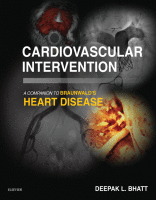Physical Address
304 North Cardinal St.
Dorchester Center, MA 02124

Open full size image Introduction Venous thromboembolic disease (VTE), comprised of deep vein thrombosis (DVT) and pulmonary embolism (PE), is morbid, expensive, and potentially fatal. It ranks as the third most common cardiovascular disease, and consumes significant health care dollars.…

Open full size image Introduction The management of cerebrovascular disease has often lagged behind the advances made in the management of cardiovascular disease. However those same technological advances in cardiovascular devices have facilitated the development of dedicated neurovascular devices, which…

Open full size image Carotid Intervention The Data When discussing the clinical data for outcomes in carotid artery stenting (CAS), there are several important outcomes to be detailed: periprocedural (30 day) safety, which is composed of death, all stroke, and myocardial…

Open full size image A Abdominal Aortic Aneurysm Introduction Abdominal aortic aneurysm (AAA) is defined as a 50% increase in the diameter of the aorta when compared with a normal segment. The average infrarenal aortic diameters for men and women…

Open full size image Introduction Hypertension is a leading cause of death worldwide, with 13% of all deaths attributed to it in 2004 (World Health Organization, 2009). A prevalence of 29% (1.56 billion) has been predicted for 2025. In the…

Open full size image Introduction Prevalence The prevalence of mesenteric arterial stenoses is much more common than is the clinical manifestation of chronic mesenteric ischemia (CMI), likely due to the rich vascular communication among the three mesenteric vessels. CMI is…

Open full size image Introduction A key principle governing renal artery stenting (RAS) is that clinical benefit will result from relieving a significant renal artery stenosis causing renal hypoperfusion. Published meta-analyses suggest that a very high RAS technical success rate…

Open full size image Introduction Atherosclerotic upper extremity obstructive disease is predominantly secondary to subclavian or innominate artery stenosis (SAS or IAS). The diagnosis is usually suspected when a significant (often ≥15 mm Hg) systolic brachial blood pressure discrepancy (SBBP) is detected…

Open full size image Clinical Assessment Peripheral artery disease (PAD) is caused by a number of pathologies affecting the arteries of the lower extremities. The most common cause in industrialized countries is atherosclerosis, but the interventionalist needs to be aware…

Open full size image Introduction Optical coherence tomography (OCT) is a tomographic imaging technology first described for use in ophthalmology that has been adapted for real-time intravascular imaging. The resolution of OCT is significantly higher than other currently available intravascular…